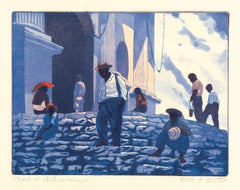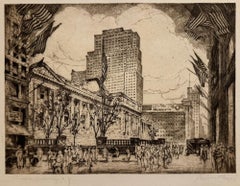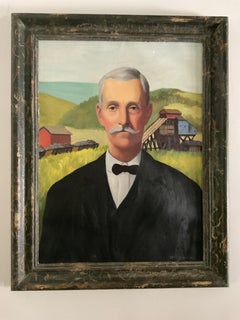Jesse F. Reed Art
Jesse Floyd Reed studied art in New York City at the Grand Central School of Art and the Art Students’ League. He held degrees in History and English and completed special advanced studies in Asian, African and Latin American art, history and culture. At the time of his retirement, he was a professor of the Arts Emeritus at Davis & Elkins College, a position he held for over 49 years. A nationally recognized artist since 1947, professor Reed’s art has been shown in hundreds of museums, libraries, colleges, and universities, including the Museum of Fine Arts in Boston, the National Museum, the Library of Congress, the Brooklyn Museum and the Seattle Museum. In his native West Virginia, he is represented in the permanent collections of the Huntington Museum of Art and the Charleston Museum at Sunrise. The recipient of many national and regional awards, Reed was a member of the Salmagundi Club in New York, the Boston Printmakers, the Print Club of Albany and was a founding member of the West Virginia Water Color Society.
1960s American Modern Jesse F. Reed Art
Etching, Aquatint
1950s American Modern Jesse F. Reed Art
Aquatint
1920s American Modern Jesse F. Reed Art
Archival Paper, Etching, Aquatint
Mid-20th Century American Modern Jesse F. Reed Art
Handmade Paper, Laid Paper, Etching
Early 20th Century American Modern Jesse F. Reed Art
Handmade Paper, Etching
Early 20th Century American Modern Jesse F. Reed Art
Mixed Media, Etching, Aquatint
1960s American Modern Jesse F. Reed Art
Aquatint
Early 20th Century American Modern Jesse F. Reed Art
Mezzotint, Aquatint
Early 20th Century American Modern Jesse F. Reed Art
Handmade Paper, Etching, Aquatint
1920s American Modern Jesse F. Reed Art
Archival Paper, Etching, Aquatint
1970s American Modern Jesse F. Reed Art
Aquatint, Laid Paper
1930s American Modern Jesse F. Reed Art
Etching, Aquatint
1920s American Modern Jesse F. Reed Art
Handmade Paper, Laid Paper, Etching, Aquatint
Late 20th Century American Realist Jesse F. Reed Art
Oil



